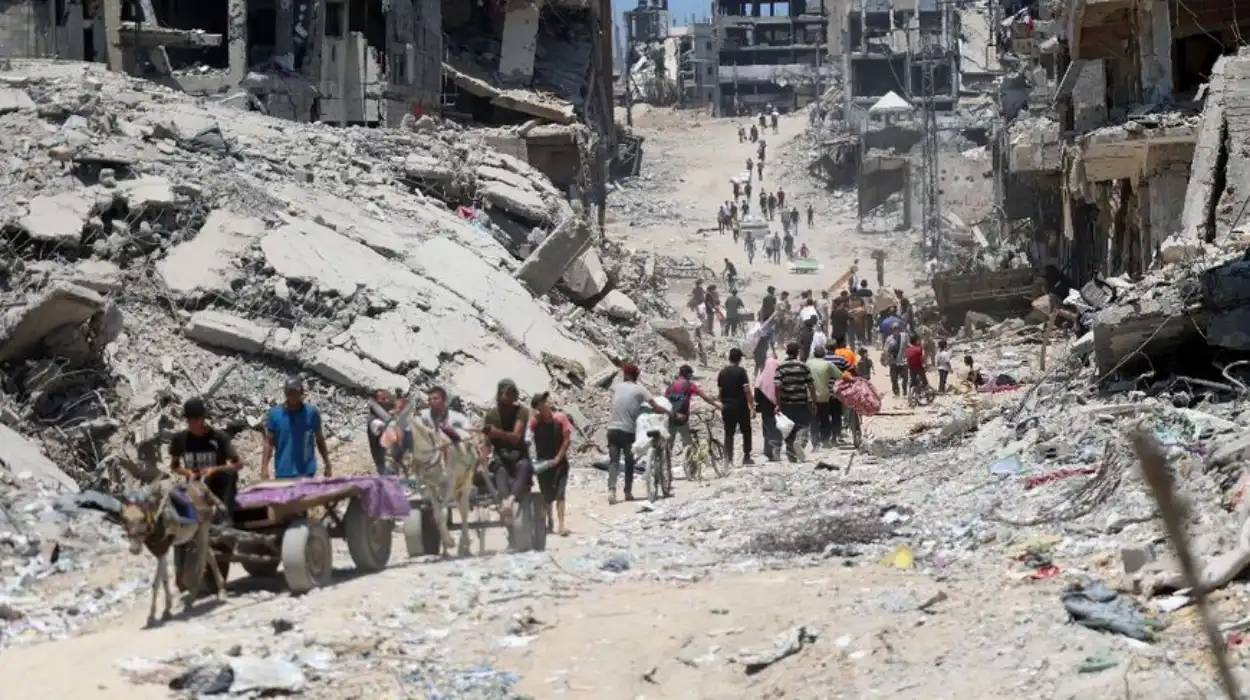Palestine (Transatlantic Today)- Gaza City and neighbouring areas saw fierce fighting and shelling on Friday, signalling a significant escalation in the conflict that has now been going on for ten months. Amid the violence, international mediators continued their efforts to reach a ceasefire.
Diplomatic efforts for a ceasefire
At a NATO summit in Washington on Thursday, US President Joe Biden reported on progress in diplomatic negotiations to end the conflict. He stressed the urgency of a ceasefire. However, media outlets connected to Hamas, the group responsible for the initial attack on October 7 that triggered the conflict, reported over 70 new Israeli airstrikes.
Civilian Casualties and Devastation
Gaza’s health ministry confirmed 32 fatalities, most of whom were women and children. The eastern district of Shujaiya in Gaza City has been particularly devastated, with 85% of buildings rendered uninhabitable. The civil defense agency reported numerous bodies found under the rubble, highlighting the severe impact on the civilian population.
Mass Displacement and Humanitarian Crisis
According to France24, the Israeli military’s ground operations have extended into various Gaza City districts, urging residents to evacuate due to ongoing dangerous combat. The United Nations estimated that up to 350,000 people were staying in these areas. Families like Umm Ihab Arafat have been displaced multiple times, facing dire conditions amid the relentless conflict. The International Committee of the Red Cross (ICRC) described the situation as a humanitarian crisis, with entire families trapped and seeking safety.
Truce Negotiations and Ongoing Conflict
Indirect talks between Israel and Hamas, facilitated by Qatari and Egyptian mediators, have been ongoing for months. Recent discussions in Doha involved Israeli and US officials considering terms for a ceasefire. Prime Minister Benjamin Netanyahu emphasized that any agreement must ensure the release of hostages and the dismantling of Hamas’s capabilities. US President Biden outlined a phased plan for peace, starting with a six-week truce and subsequent negotiations for a permanent resolution.
Challenges in humanitarian aid
The conflict, which began after a deadly Hamas attack on 7 October, has led to significant civilian casualties on both sides.
Gaza’s health ministry reported over 38,000 deaths, mostly civilians since Israel launched its military offensive. The region also faces a severe blockade, leading to widespread starvation and inadequate medical supplies. Only a few vehicles are permitted into Gaza, and a US-built relief pier is having operating difficulties, hampering efforts to deliver aid.
The international community is still concentrating its diplomatic efforts to establish a long-term truce and provide for the humanitarian needs of the impacted populations as the violence rages on.


























